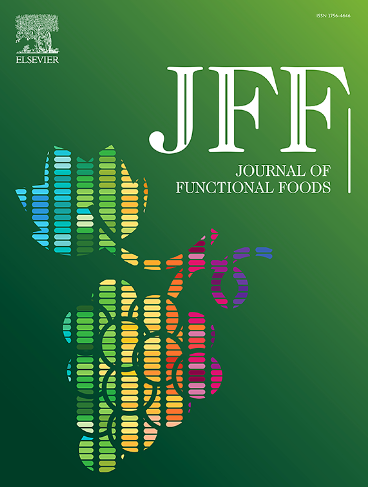Cellular mechanisms underlying the effects of sucralose on keratinocyte proliferation and its contributing roles in epidermal regeneration
IF 3.8
2区 农林科学
Q2 FOOD SCIENCE & TECHNOLOGY
引用次数: 0
Abstract
The main objectives of this study are to investigate the effects of sucralose on skin wound healing acceleration, UVB-induced epidermal epithelial damage, and to identify its underlying mechanisms of action. Sucralose significantly increased wound healing with an EC50 of 30.47 μM, a maximal effect being observed at 100 μM. In addition, sucralose failed to induce wound healing in mitomycin C-primed HaCaT cell monolayers. Sucralose significantly increased keratinocyte proliferation and prevented UVB-induced cell death. These effects were suppressed by inhibitions of protein kinase A (PKA), AMP-activated protein kinase (AMPK), sirtuin-1 (SIRT-1), and extracellular signal-regulated kinase (ERK). Sucralose-induced AMPK phosphorylation was fully abolished by pretreatment with a PKA inhibitor. Sucralose-induced ERK phosphorylation was suppressed by inhibitors of AMPK and SIRT-1. Effect of sucralose-induced SIRT-1 activity was attenuated by PKA and AMPK inhibitor. Sucralose promotes wound healing and reduces keratinocyte death after UVB exposure by increasing cell proliferation via PKA/AMPK/SIRT-1/ERK-dependent mechanisms.

三氯蔗糖对角质细胞增殖的影响及其在表皮再生中的作用的细胞机制
本研究的主要目的是研究三氯蔗糖对皮肤伤口愈合加速、uvb诱导的表皮上皮损伤的影响,并确定其潜在的作用机制。三氯蔗糖显著促进创面愈合,EC50为30.47 μM,在100 μM处效果最大。此外,三氯蔗糖不能诱导丝裂霉素c引发的HaCaT细胞单层的伤口愈合。三氯蔗糖显著增加角质细胞增殖,防止uvb诱导的细胞死亡。这些作用通过抑制蛋白激酶A (PKA)、amp活化蛋白激酶(AMPK)、sirtuin-1 (SIRT-1)和细胞外信号调节激酶(ERK)而被抑制。通过PKA抑制剂预处理,三氯蔗糖诱导的AMPK磷酸化被完全消除。三氯蔗糖诱导的ERK磷酸化被AMPK和SIRT-1抑制剂抑制。PKA和AMPK抑制剂可减弱三氯蔗糖诱导的SIRT-1活性。三氯蔗糖通过PKA/AMPK/SIRT-1/ erk依赖机制促进UVB暴露后的细胞增殖,从而促进伤口愈合并减少角化细胞死亡。
本文章由计算机程序翻译,如有差异,请以英文原文为准。
求助全文
约1分钟内获得全文
求助全文
来源期刊

Journal of Functional Foods
FOOD SCIENCE & TECHNOLOGY-
CiteScore
9.60
自引率
1.80%
发文量
428
审稿时长
76 days
期刊介绍:
Journal of Functional Foods continues with the same aims and scope, editorial team, submission system and rigorous peer review. We give authors the possibility to publish their top-quality papers in a well-established leading journal in the food and nutrition fields. The Journal will keep its rigorous criteria to screen high impact research addressing relevant scientific topics and performed by sound methodologies.
The Journal of Functional Foods aims to bring together the results of fundamental and applied research into healthy foods and biologically active food ingredients.
The Journal is centered in the specific area at the boundaries among food technology, nutrition and health welcoming papers having a good interdisciplinary approach. The Journal will cover the fields of plant bioactives; dietary fibre, probiotics; functional lipids; bioactive peptides; vitamins, minerals and botanicals and other dietary supplements. Nutritional and technological aspects related to the development of functional foods and beverages are of core interest to the journal. Experimental works dealing with food digestion, bioavailability of food bioactives and on the mechanisms by which foods and their components are able to modulate physiological parameters connected with disease prevention are of particular interest as well as those dealing with personalized nutrition and nutritional needs in pathological subjects.
 求助内容:
求助内容: 应助结果提醒方式:
应助结果提醒方式:


